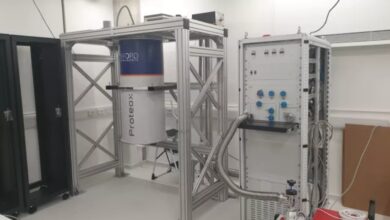Spiral Light Innovations: Revolutionizing Autonomous Vision with ‘Twisted Edison’ Technology

Breakthrough that marries early 20th-century technology with modern physics, researchers at the University of Michigan have developed a method to produce bright, twisted light using technology reminiscent of Thomas Edison’s iconic lightbulb. This discovery, published in the journal Science, could significantly enhance the vision capabilities of autonomous systems, from robots to self-driving cars.
The study, led by Jun Lu and Nicholas Kotov from the University of Michigan, demonstrates how twisting filaments at the micro and nanoscale can emit light that spirals as it travels through space. This “twisted” or elliptically polarized light offers unique properties that could be pivotal in the field of autonomous vision technology.
“Traditionally, generating twisted light has been challenging due to the lack of brightness in methods like electron or photon luminescence,” said Jun Lu, the lead author of the study. “We’ve found that by using a filament design akin to Edison’s incandescent bulb, we can achieve the brightness needed for practical applications, up to 100 times brighter than previous methods.”
The significance of this research lies in the potential of twisted light to provide more nuanced imaging capabilities. Light with different degrees of twist or helicity can interact differently with materials, which could allow autonomous vehicles to discern between objects with similar visual properties but different surface textures or patterns. For example, distinguishing between a human and a deer at night could become more reliable if the vehicle’s sensors can detect the unique ‘helicity’ of light reflected by different materials.
Nicholas Kotov, the senior author of the study, explained, “These findings could be pivotal for an autonomous vehicle to tell the difference between a deer and a human, which emit light with similar wavelengths but different helicity because deer fur has a different curl from our fabric.”
This optical innovation also holds promise for robotic vision systems, where the ability to interpret complex environments through enhanced contrast and texture recognition could lead to more sophisticated navigation and object identification capabilities.
The technology harnesses blackbody radiation principles, where the shape of the emitter, in this case, the twisted filament, influences not just the spectrum of light emitted but also its polarization. This is a departure from the conventional view where the shape of an emitting object is often considered irrelevant to the light’s properties.
However, the light produced includes a broad spectrum of both wavelengths and twists, posing a challenge for specific applications. The researchers are already exploring ways to refine this technology, including developing lasers that emit precisely tuned twisted light for more targeted uses.
The study has sparked discussions on platforms like X, with many in the tech and science communities expressing excitement about the potential applications of this “Twisted Edison” approach. The concept seems to resonate with the idea of giving machines the visual acuity of nature’s own champions of vision, like the mantis shrimp, known for its ability to detect a wide range of light polarizations.
As this research progresses, it could lead to breakthroughs in not only autonomous vehicle technology but also in fields like medical imaging, where distinguishing between different biological tissues based on their light interaction properties could enhance diagnostic capabilities.
The University of Michigan’s work on twisted light, drawing from one of the most fundamental inventions in electric lighting, signifies how historical technology can inspire modern scientific advancements, potentially reshaping the future of vision in autonomous systems.




